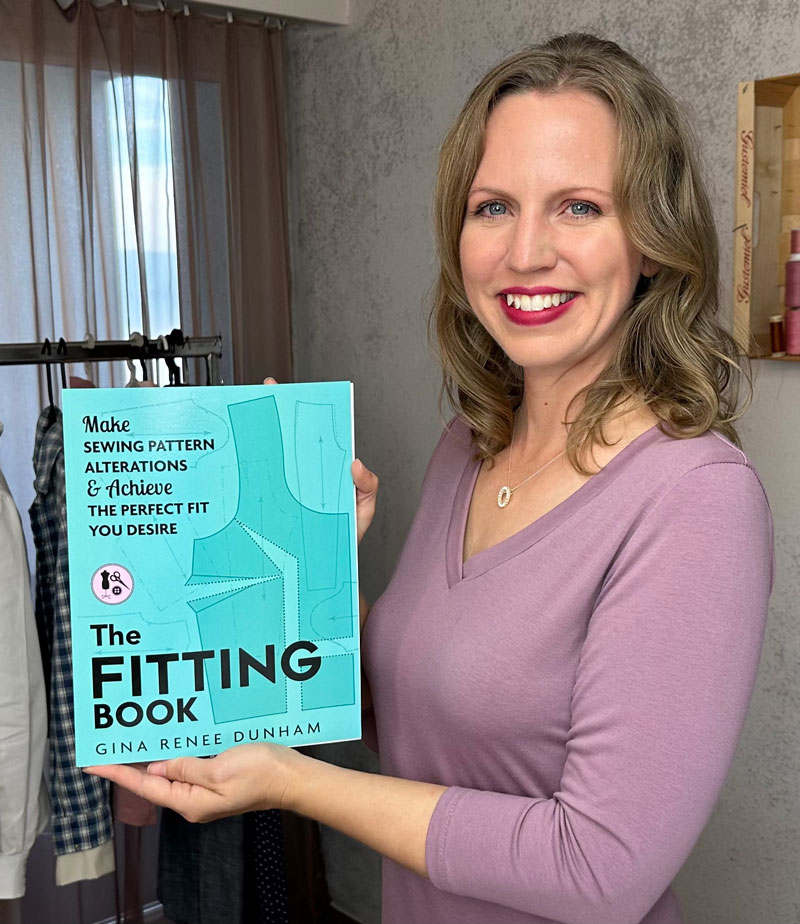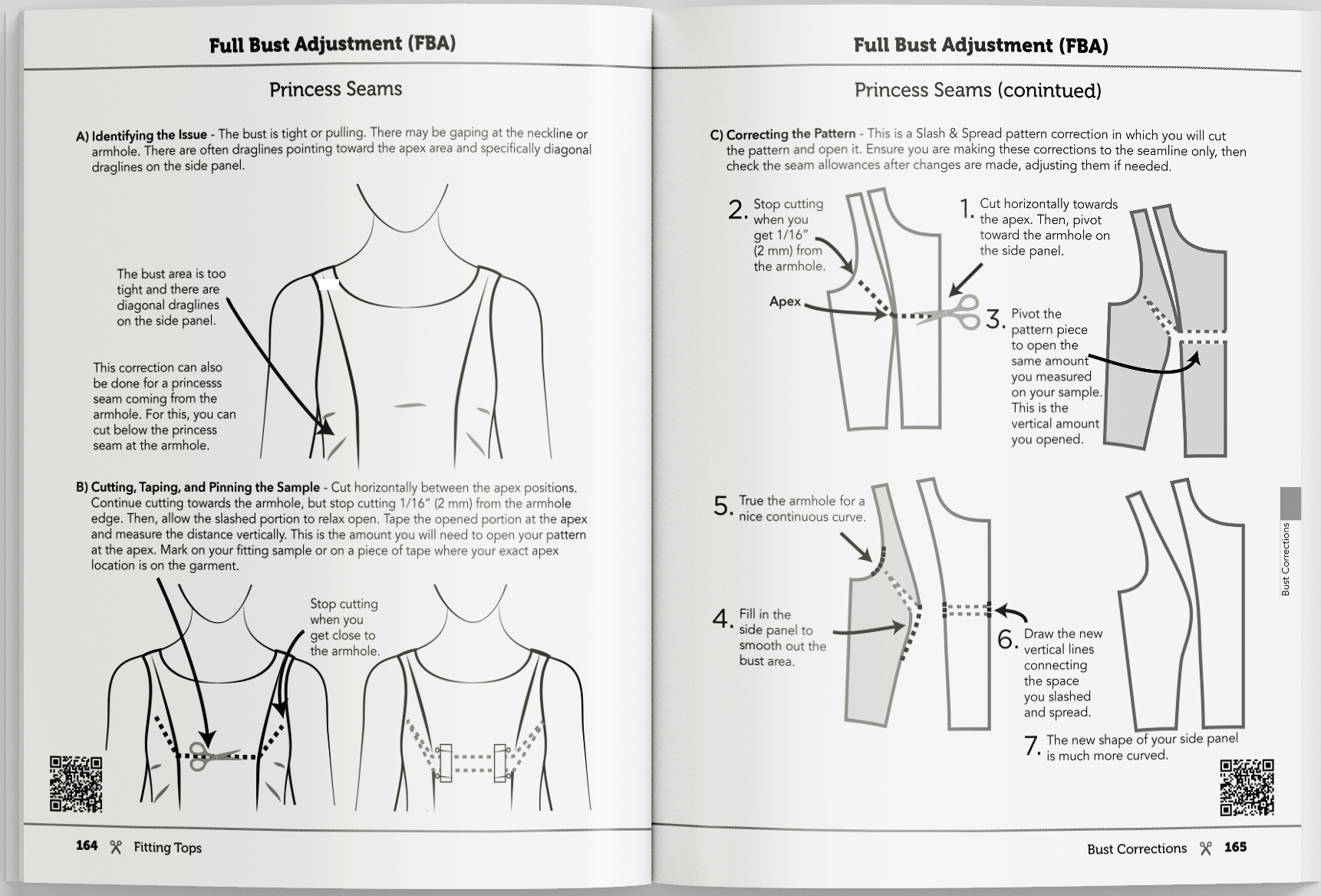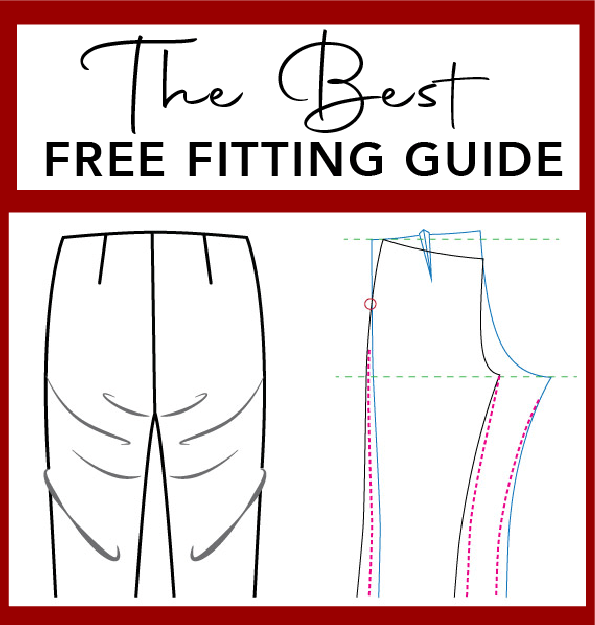

Sleeve Corrections – Peaking Out or Hiking Up – Option 1
The problem: peaking/hiking up/ winging out sleeve opening. There could be two indications:
1. The sleeve hem is too slanted and hiking up/out on the side.
2. There could be drag lines coming from the sleeve cap going towards the sleeve hem. On long sleeves, it shows as excessive draglines under the arm.
How to fix it?
1. Cut open the sleeve cap height and let it drop down to where it looks and feels better.
2. Tape it together and move around a bit to see if it’s still comfortable.
3. Add that amount to the cap height.
4. Reduce the sleeve opening if desired.
5. If you don’t want to cut your sample, measure the amount you want to lower the hemline down to (arrow on the image) and add that amount to the cap height. This is for short sleeves.
6. You may need to lower your armhole to get the new sleeve to fit.
When this correction happens, you will likely need to perform other corrections, like ‘across-shoulder too narrow’ or ‘armholes too high’. This way, sleeves won’t become too large.
You might only (or also) need to reduce the new sleeve to fit the existing armhole. We’ll discuss this in option 2.
If you remember, the higher the cap height, the less arm lift you have. So, if the garment is for sports and it’s functional to lift the arms all the way up, you don’t need this correction. Everyday clothes will have a slight angle to the hemline, but not too drastic. The angle may increase for woven shirts. (Some styles like cap sleeves will never be straight)
Have you ever come across this issue? Ever seen it in ready-to-wear clothes? 😩🥺🤔
This information and more can be found in The Fitting Book. Order your book today through the link below.
Learn the 3-Step Fitting Process:
A) Identify the Fitting Issue.
B) Pin, Cut, & Tape the Fitting Sample.
C) Correct the Sewing Pattern.

The Fitting Book Includes:
Tops
Pants
Skirts/Dresses
My Secret in Diagonal Draglines
ACHIEVE THE
CUSTOMIZED FIT
YOU WANT

